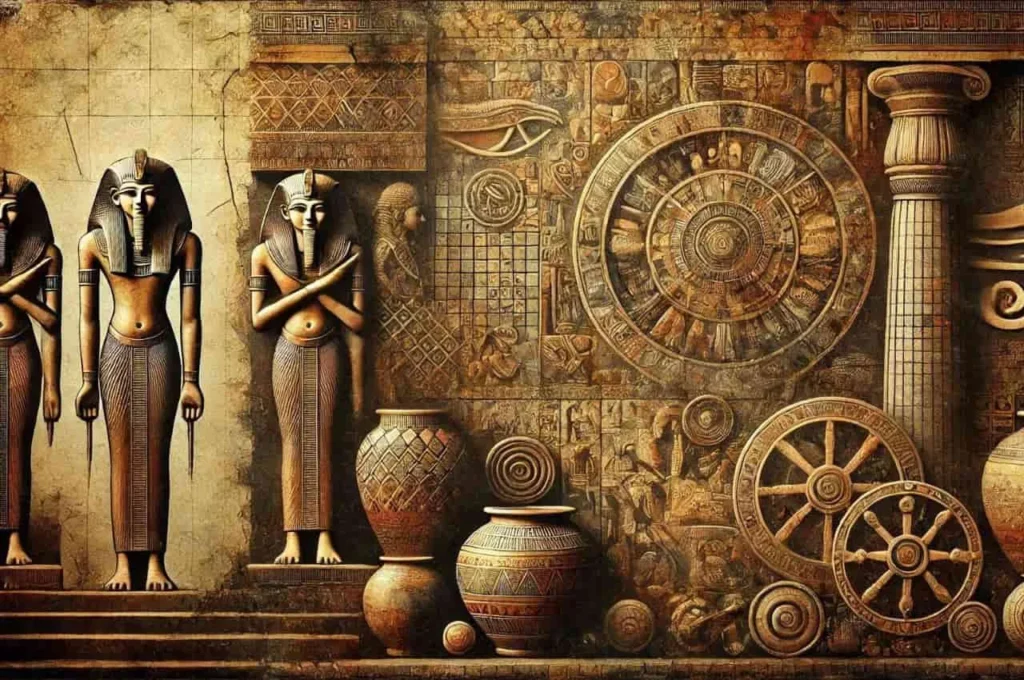Throughout the information, artwork has played a crucial position in growing human lifestyle, verbal exchange, and expression. From the cave artwork of earthworks to the complex sculptures of ancient civilizations, artwork has artwork a window into the values, beliefs, and day by day day-by-day beings. One such fascinating problem is the concept of “ancient Artz,” a period that shows a modern interpretation of historical artwork practices that have advanced or been rediscovered.
In this newsletter, we’re able to explore the exploration of ancient artwork, its historical importance, key contributions to fashionable paintings, and why it keeps fascinating the creativity of artists, historians, and creditors.
Defining Ancient Artz
The period “period” is a current word that may not seem in traditional ancient texts however is increasingly number used to give explanations for the fusion of ancient paintings and their modern-day reinterpretations. Presents age-vintage mastery of historical civilizations and the current spirit of modern-day thoughts from historical paintings paperwork.
Ancient artwork embodies several modern practices, which include painting, sculpture, pottery ring-making, and form, for the duration of an in-depth variety of cultures. The paintings produced via historical civilizations together with the Egyptians, Greeks, Romans, Mesopotamians, and Mayans workplaMayans’ntings the inspiration of this exploration. Each civilization contributed particular patterns, strategies, and symbolism, leaving an extended-lasting effect on future generations of artists.
The Origins and Evolution of Ancient Artz
The roots of historic paintings can be traced another time tens of loads of years to early human societies. Some of the earliest diagnosed examples embody the Paleolithic cave artwork decided in Frafoundascaux Cave, which depicts animals and looking scenes. These early imaginative endeavors function as a sworn statement to the choice of early humans to report their reviews and communicate via seen representation.
Society has grown to be superior, and so has their portrayal of work. Ancient Egypt, for instance, was superior to a fairly modern progressive culture that focused on religion and the afterlife. The Egyptians used a sincerely one-of-a-type style to color gods, pharaohs, and everyday lifestyles, and regularly the usage of hieroglyphics and colorful sunglasses. Their notable systems, collectively with the pyramids and temples, furthermore feature in testaments to their progressive and architectural prowess.
The Greeks and Romans, but, emphasized realism and humanism in their art. The classical sculptures of historical Greece, which include the Venus de Milo and the Discobolus, show off deep statistics of anatomy and percent. Roman paintings borrowed carefully from Greek influences but delivered more recognition of taking photos of the man or woman likenesses of its topics, in particular in portraiture.
In the Americas, ancient civilizations similar to the Mayans and Aztecs moreover left inside the lower back of difficult revolutionary endeavors, collectively with works of paintings, pottery, and carvings that regularly held religious or spiritual significance. The detail and craftsmanship in their artwork show artwork the connection between artwork, nature, and the cosmos.
Key Themes and Symbolism in Ancient Artz
Ancient artwork became extra than genuinely aesthetic; it emerged as an emergence of communication and contemplated photos of societal values. Certain subjects recur in the artwork of modern civilizations:
Religion and Spirituality: Art grow to be frhas grownntly used to depict religious figures, deities, and rituals. Ancient Egyptian tomb artwork, for artwork, illustrates the journey to the afterlife, at the same time as Greco-Roman sculptures regularly depict mythological gods and goddesses.
Nature and Animals: Early human societies have been carefully linked to the natural international, and this relationship is regularly contemplated in their artwork. Cave artwork and post-workout carvings frequently depict animals, landscapes, and herbal phenomena, emphasizing their significance in each day’s existence and spirituality.
Power and Status: Art changed into notably applied as a tool for propaganda, reflecting the energy and authority of rulers and elites. Monumental systems, which incorporate the pyramids in Egypt or the statues of Roman emperors, were designed to supply a sense of grandeur and divine right.
Storytelling: In many historic cultures, paintings served as a technique of recording reminiscences, histories, and mythologies. The carvings of historic Mesopotamia and the frescoes of historic Crete, for instance, tell designated testimonies about wars, religious practices, and the deeds of gods and kings.
The Influence of Ancient Artz on Modern Art
Ancient paintings continue to encourage and have an impact on present-day artists, designers, and designers. Many cutting-edge artists draw upon ancient techniques, motifs, and problem topics of their artwork, mixing the antique with the brand new specifically and progressive strategies. This movement, occasionally called “neo-ancientism,” has acquired popularity in several painting paperwork, together with portraits, sculptures, and digital artwork.
One artwork instance of ancient impact on modern-day paintings is the revival of classical mission topics within the course of the Renaissance duration. Artists that encompass Michelangelo, Leonardo da Vinci, and Raphael seemed to the paintings of historic Greece and Rome for belief, growing tech, and techniques like attitude, anatomy, and sharing which might be irrespective of the reality that is used nowadays.
In the 21st century, ancient paintings are also gaining interest in the global of virtual and interactive artwork. Virtual reconstructions of ancient net sites, three-D printing of historic sculptures, and augmented truth exhibitions are only some examples of the way the current era is breathing new existence into ancient paintings workplace paintings.
Exploring the Mysteries of Ancient Artz: A Journey Through Time
Preserving the legacy of ancient paintings is crucial for retaining a connection to our shared cultural history. Many historical works of artwork are housed in museums, at the same time as others live in situ, exposed to the factors and the effects of time. Preservation efforts, along with conservation, recuperation, and virtual documentation, are crucial for making sure that those treasures undergo for destiny generations.
However, traumatic conditions stay. Looting, illegal painting trafficking, and environmental degradation threaten the survival of ancient works of artwork and archaeological web websites international corporations, which incorporate UNESCO, artwork to artwork preserve these beneficial quantities of records, recognize that when out of place, they can’t be replaced.
